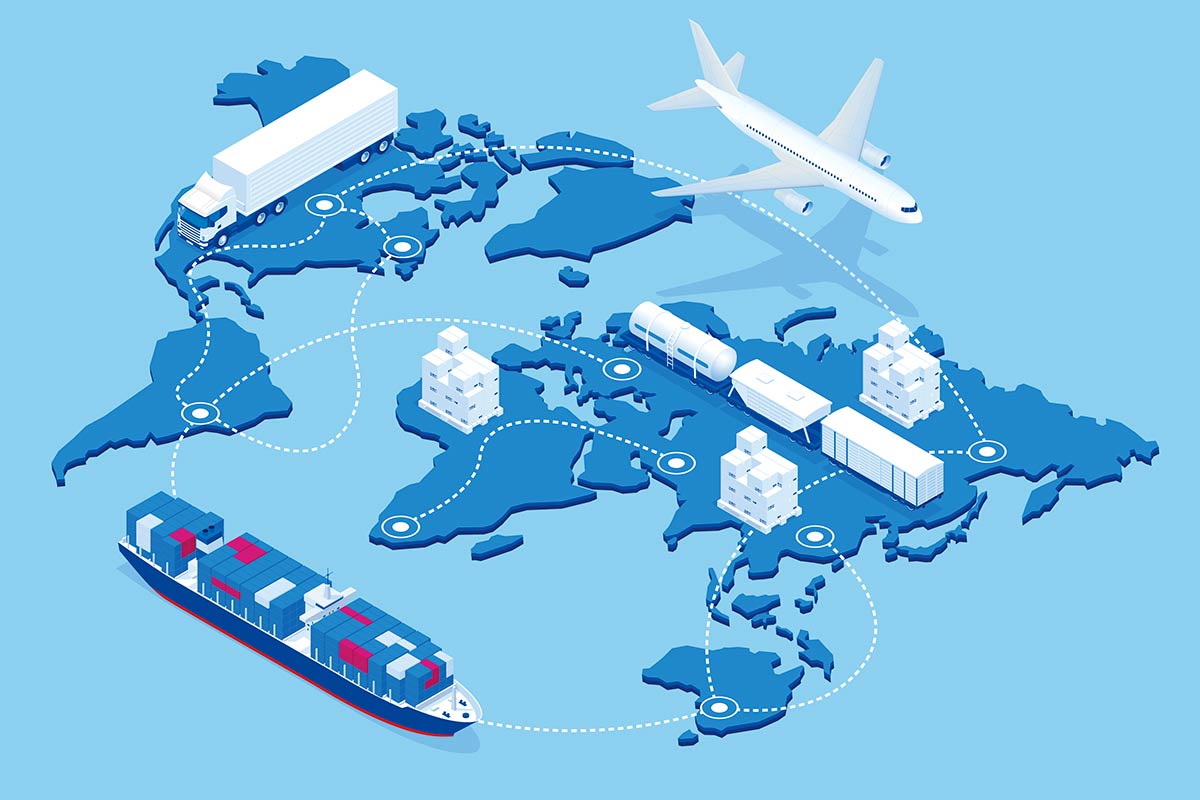Though we continue to feel the impacts of COVID-19 on personal, organizational, national and global levels, there are a number of insights the life sciences logistics industry has gained over the course of the pandemic.
For those working in supply chain management, COVID-19 has been the latest in a series of disruptive global challenges, including natural disasters, socio-political conflict and supply shortages. Such challenges have pushed global logistics experts to adapt and innovate in order to keep science moving forward.
Learning from adversity
Supply chain management has become increasingly complex in recent years due to a number of factors. A typical shipment may have several touchpoints before reaching its final destination, and every player from point A to point B can make or break a shipment’s success.
For certain sectors, including those on the ‘COVID-19 frontline’, supply chain management has been strenuous and plagued with uncertainty. The provision of personal protective equipment for frontline workers was just the first in a series of difficulties due to an exponential rise in demand.
The global scientific community was able to collaborate to develop and test a COVID-19 vaccine, even with transportation and supply shortages. The development of the vaccine was successful because of an international effort to streamline resources and processes related to transporting materials during research and development, clinical trials and manufacturing.
Life sciences logistics experts aided the vaccine development process by identifying ways to secure the supply chain: insurance, diversification and risk assessment. Though these solutions are not cheap to implement, they are widely applicable outside of vaccine development.

Here are 5 key actions that the industry should continue to use to secure supply chains beyond the pandemic:
- Improve the international and inter-agency compatibility of resilience standards and programs.
- Ensure supply chain risks are assessed as part of all management and governance processes.
- Develop networks of suppliers, customers and government officials to focus on risk management.
- Improve the visibility of network risks via sharing information and developing standardized risk assessment tools.
- Improve risk communications both before and after disruptions.
These solutions take time and resources to implement, but small investments in supply chain security over time are valuable.
Utilizing alternate shipping routes
One of the most important responses to supply chain disruptions is to build in flexibility in transportation routes. Just as many airlines have reduced passenger flights, with some converting to cargo only, quarantine restrictions and smaller customs workforces have led to longer transit times.
This limited operational capacity inevitably drives up prices in the short term, and can also make it difficult for organizations that have previously relied on a single transport route.

To ensure time- and temperature-sensitive shipments are transported both safely and effectively during times of limited operational capacity, companies often need to design and implement creative routings within a matter of hours, if not minutes.
Solutions include using alternate airlines, chartering aircraft or booking shipments for cargo-only flights, as well as routing shipments through countries which historically would not have been used as layover points.
Earlier in March, 2020, American Airlines scheduled its first cargo-only flight since 1984, providing much-needed cargo capacity and medical supplies.
Transporting time- and temperature-sensitive materials
The life sciences industry will continue to rely more on cold chain solutions to transport life-saving materials, like vaccines.
Here are some cold chain management best practices:
- Prepare contingency plans that reduce the impact of uncontrollable external factors, such as choosing logistics partners that create, develop, implement and improve procedures that can contain risk.
- Ensure your logistics partner has the capacity to consider all relevant factors when deciding packaging solutions and route design. This means factoring transit time, routing and temperature requirements into the transport plan.
- Where cryogenically frozen material is being transported, choose partners who offer the opportunity to top-up liquid nitrogen dewars at strategic checkpoints, protecting the materials in the event of delays.
- Insist on smart tracking and monitoring that is client facing, as well as logistics partner facing.
Biocair works to GDP standards across its global network, delivering industry-leading logistics solutions for even the most sensitive biological materials.
Learn about Biocair's efforts in initial COVID-19 vaccine distributions across all nine provinces in South Africa.
If you would like to find out how we can transport your life sciences materials, please contact your local office.
Mark Holden
Regional Operations Director (Europe and Africa)
Mark is responsible for the overall management of Biocair’s operations in mainland Europe and Africa. With over 20 years’ experience of building successful teams in the UK and Europe within express and specialist pharmaceutical logistics, Mark is ideally placed to understand the needs of customers and to develop the team and solutions required to ensure service excellence.
